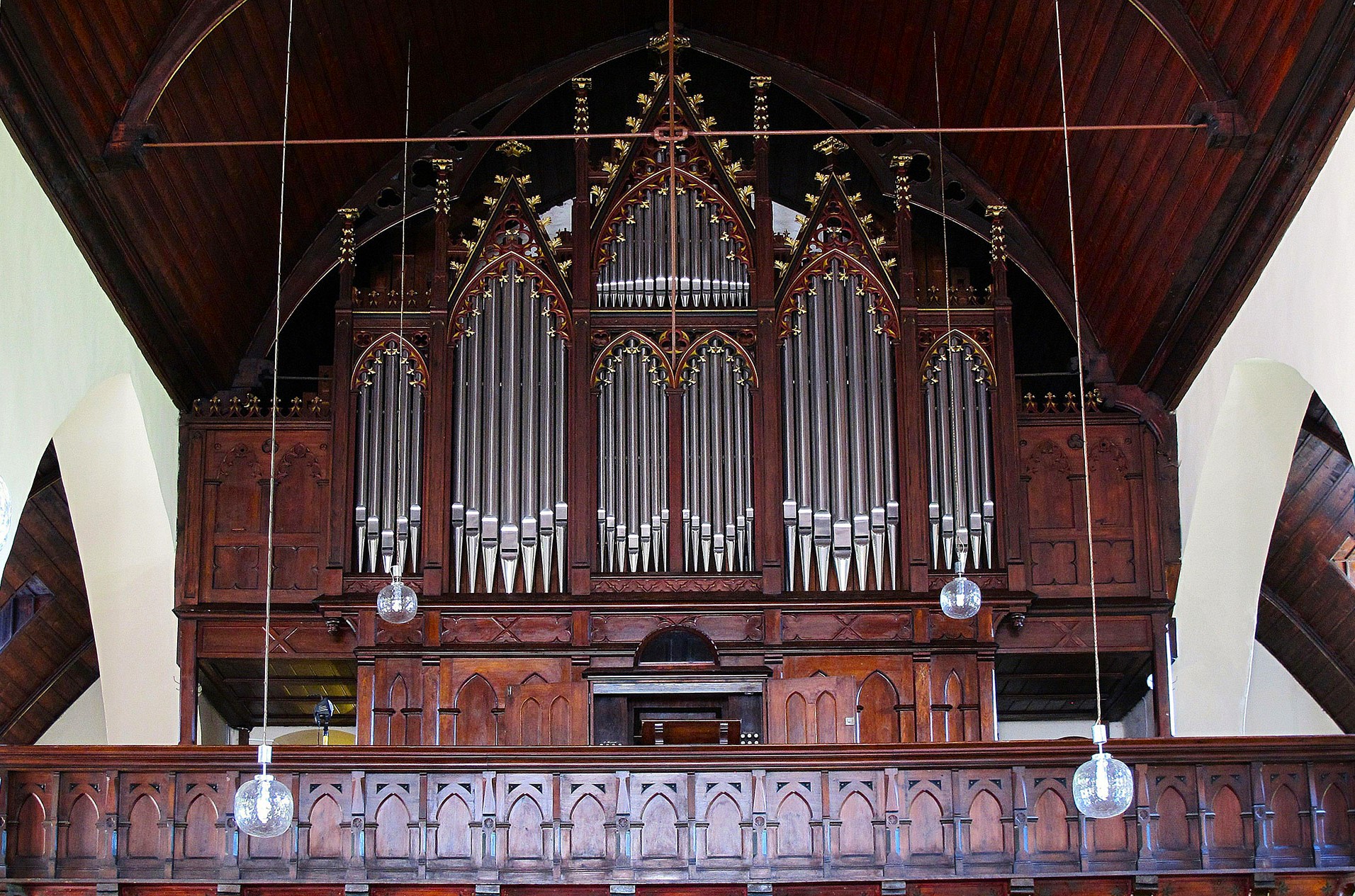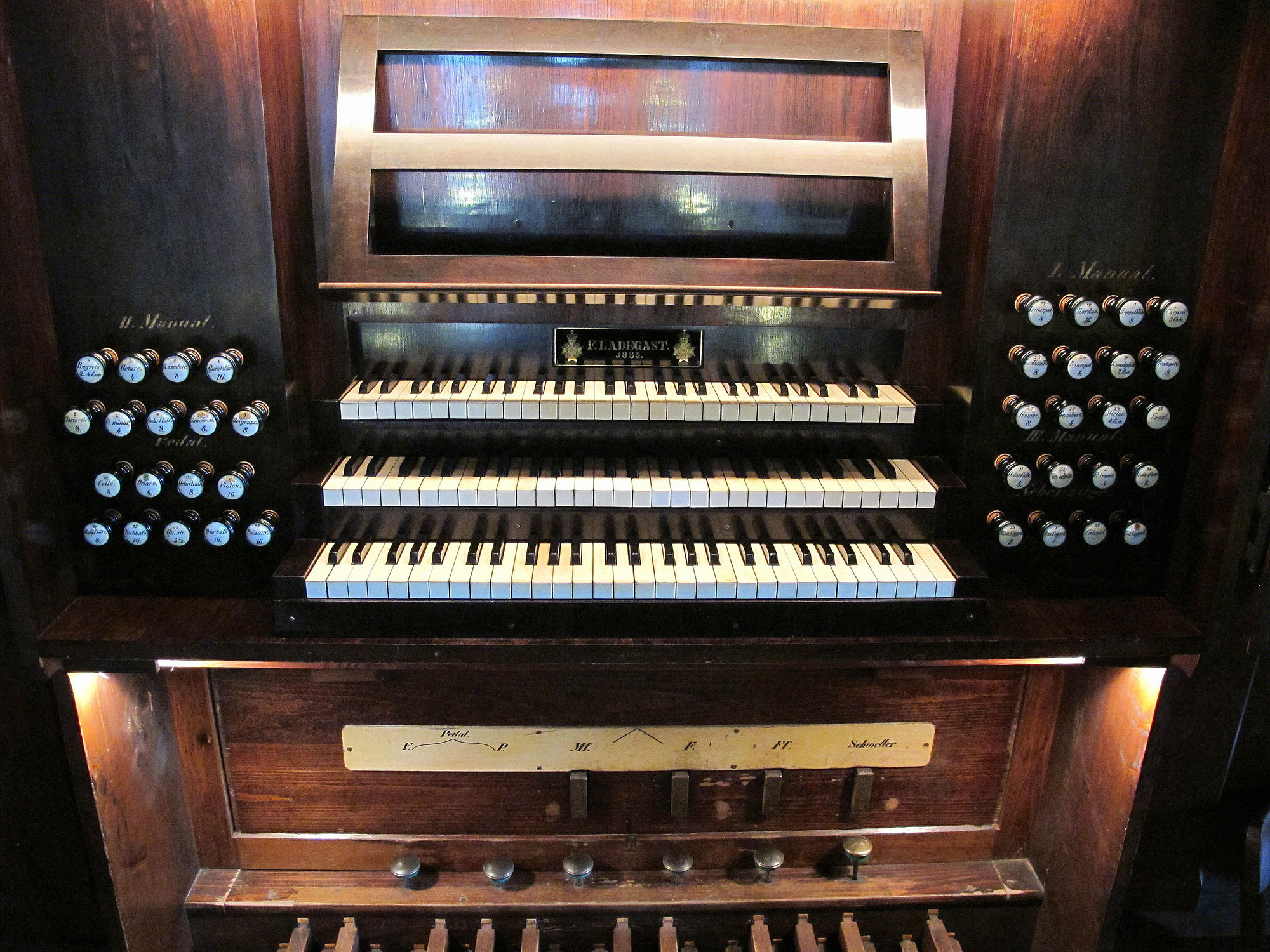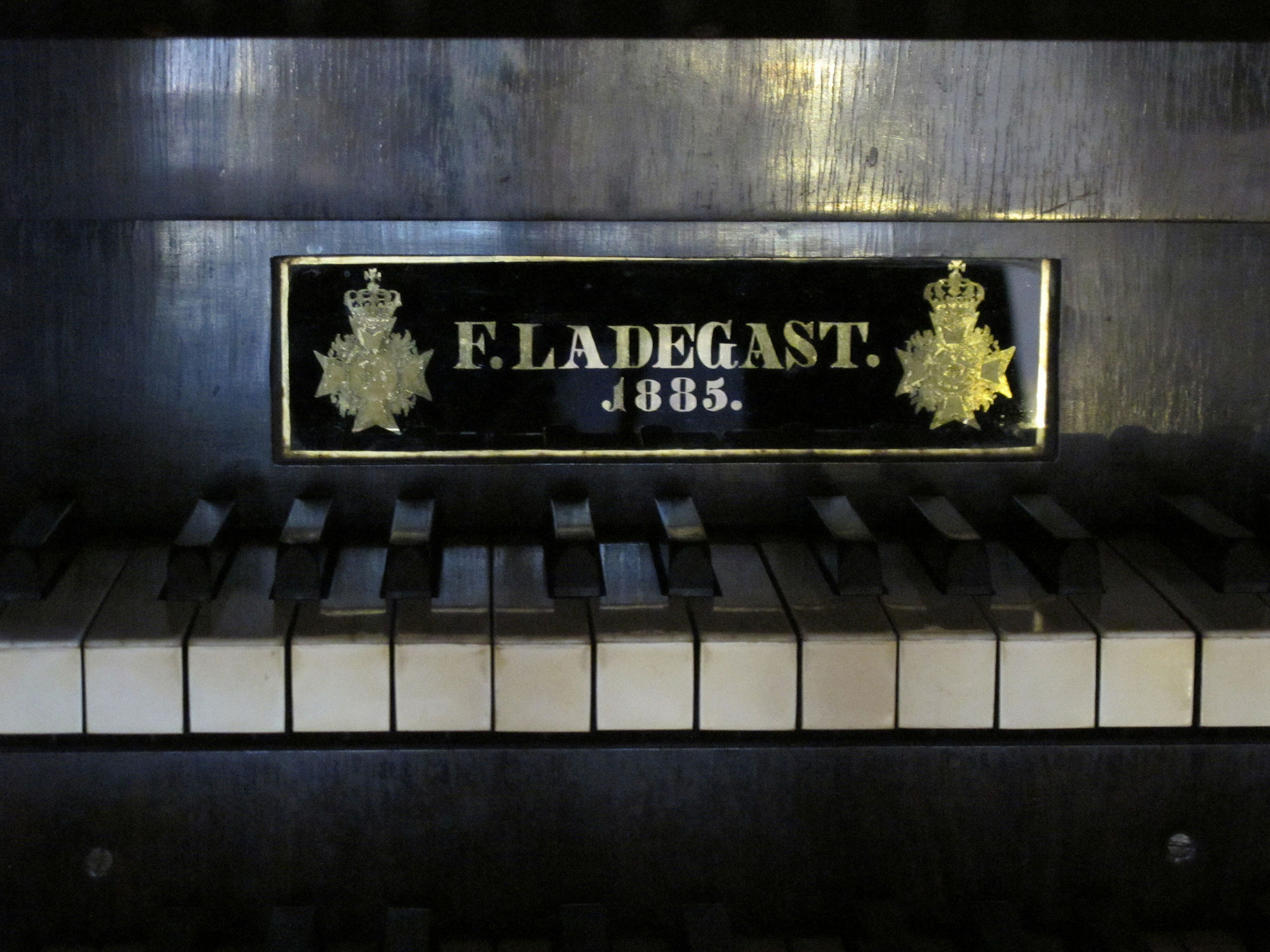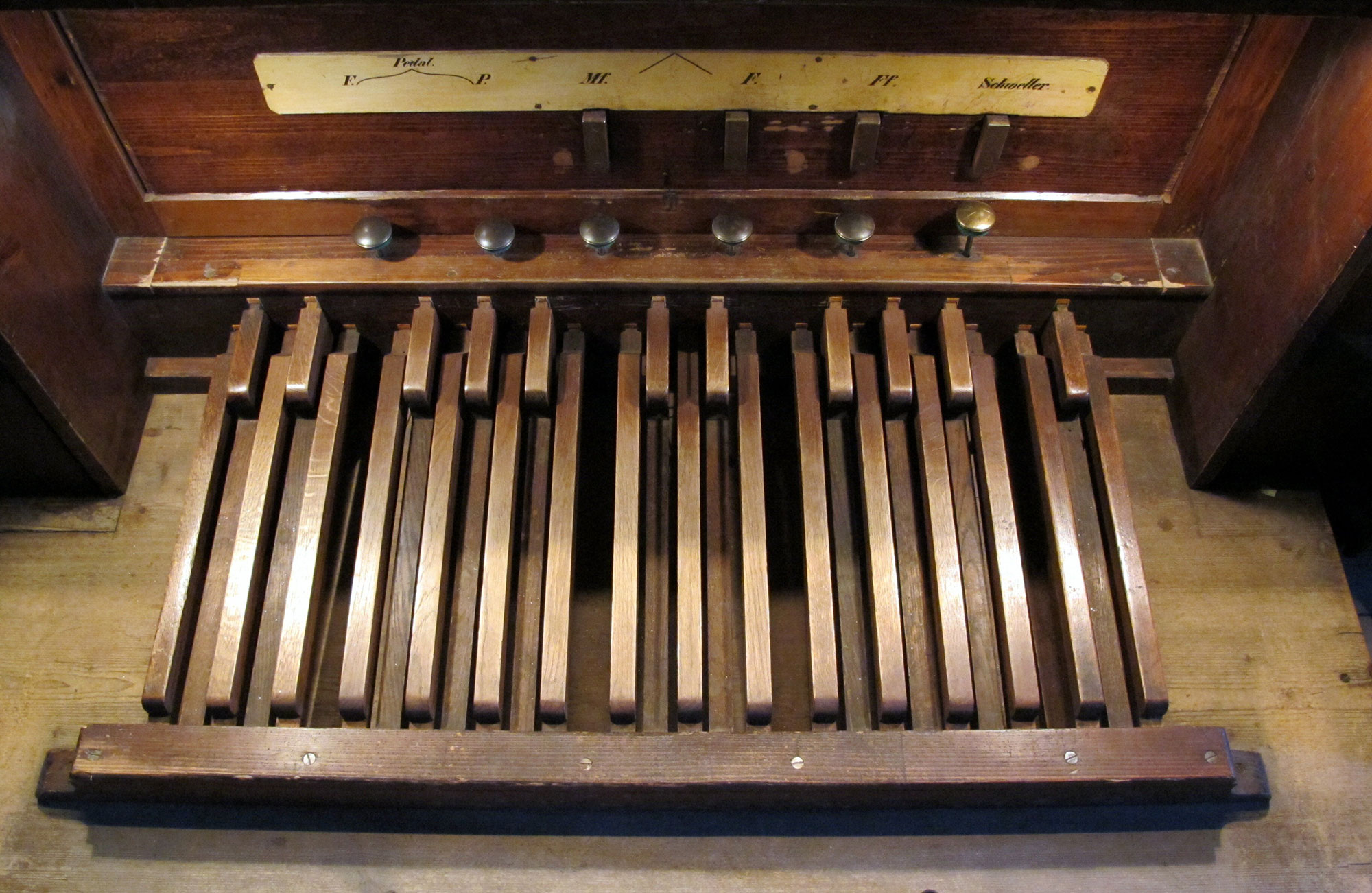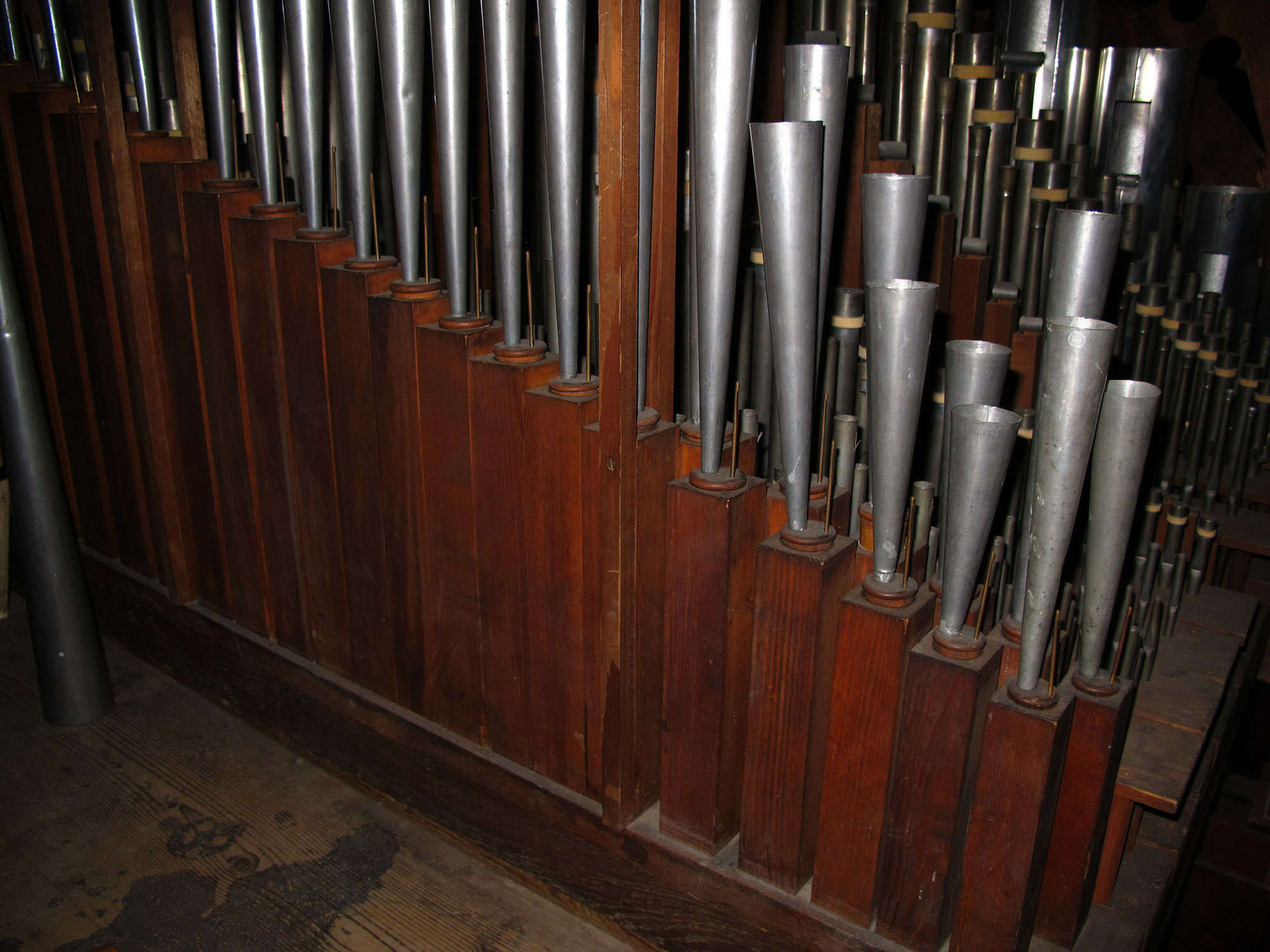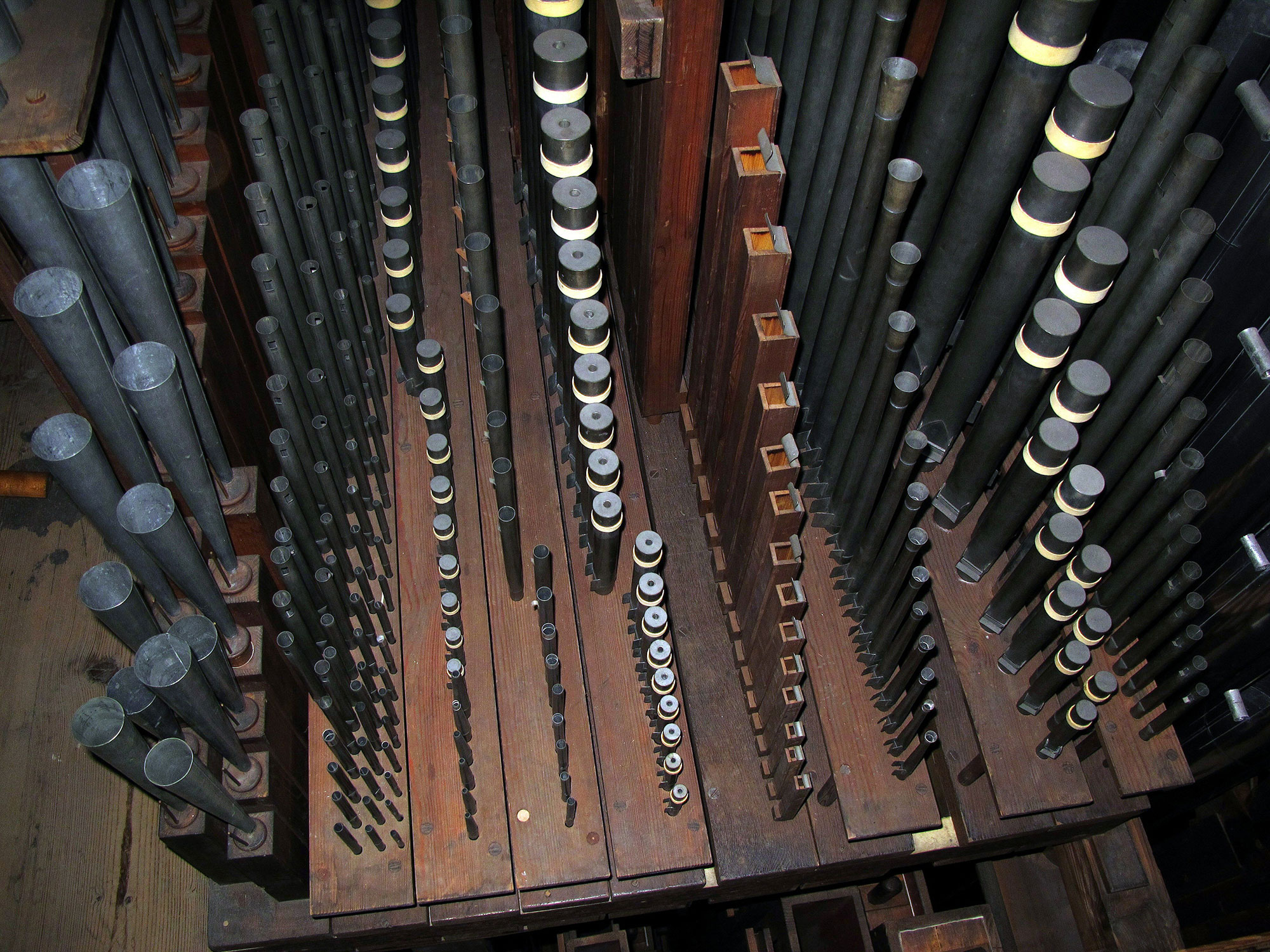Wernigerode, St. Johannis-Kirche Wernigerode
| Builder | F. Ladegast |
|---|---|
| Year | 1885 |
| Period/Style | Romantic |
| Stops | 33 |
| Keyboards | 3+P |
| Keyaction | tracker/mechanical |
| Tuning | Equal at 440 Hz |
| Sampleset |
Available
 , sampled by
OrganArt Media
, sampled by
OrganArt Media
|
The 1885 Friedrich Ladegast organ in Wernigerode, Sachsen-Anhalt, Germany, represents a late example of the Ladegast three-manual organ type with mechanical action, cone chests, and Barker lever. This medium-sized instrument, with its 33 registers, has been largely preserved in its original form, except for the reconstruction of the facade pipes and the replacement of the Lieblich Gedackt in the third manual with a Vox Coelestis by Oskar Ladegast. The organ's restoration was meticulously undertaken by Orgelbau Alexander Schuke (Potsdam) between 1989 and 1991, and it underwent further general maintenance by Orgelbau Hüfken from Halberstadt following interior church renovations in 2010.
The organ is noted for its versatile sound spectrum, which spans from a Baroque-like brightness to early Romantic gentle and expressive flute tones and extends to the powerful eight-foot colors characteristic of the late Romantic period. The full organ (Plenum) is notably flexible, crafted from a variety of eight-foot and four-foot ranks, allowing for a diverse build-up of sounds. Ladegast’s unique positioning within the German Romantic era is highlighted by his use of classical repeating mixtures and a wide array of distinctive and idiosyncratic principal stops. The beautifully voiced flute and string stops, such as the Doppelflöte 8, Flauto amabile 8, Flauto travers 8, Gamba 8, and Salicional 8, possess a pronounced individual character, yet blend seamlessly to create numerous new timbral possibilities.
The organ is noted for its versatile sound spectrum, which spans from a Baroque-like brightness to early Romantic gentle and expressive flute tones and extends to the powerful eight-foot colors characteristic of the late Romantic period. The full organ (Plenum) is notably flexible, crafted from a variety of eight-foot and four-foot ranks, allowing for a diverse build-up of sounds. Ladegast’s unique positioning within the German Romantic era is highlighted by his use of classical repeating mixtures and a wide array of distinctive and idiosyncratic principal stops. The beautifully voiced flute and string stops, such as the Doppelflöte 8, Flauto amabile 8, Flauto travers 8, Gamba 8, and Salicional 8, possess a pronounced individual character, yet blend seamlessly to create numerous new timbral possibilities.
| Manual I | Manual II | Manual III (enclosed) | Pedal |
|---|---|---|---|
| Bordun 16 | Quintatön 16 | Flauto travers 8 | Principal 16' |
| Principal 8 | Geigenprincipal 8 | Viola d'amore 8 | Violon 16' |
| Gambe 8 | Salicional 8 | Vox celestis 8 | Subbaß 16' |
| Doppelflöte 8 | Rohrflöte 8 | Octavflöte 4 | Quinte 5 1/3' |
| Bordunalflöte 8 | Flauto amabile 8 | Octave 8' | |
| Principal 4 | Flauto minor 4 | Baßflöte 8' | |
| Gemshorn 4 | Octave 4 | Cello 8' | |
| Rauschpfeife 2fach | Progressio 2-4fach | Octave 4' | |
| Mixtur 4fach | Clarinette 8' (free reed) | Posaune 16' | |
| Cornett 3fach | |||
| Trompete 8 |
No Video/Audio samples available.
https://www.organartmedia.com/de/f-ladegast
 Pipe Organ Map
Pipe Organ Map